Fatih Mosque, Istanbul: Entrance Fee, Opening Hours & More
The ancient city of Istanbul, built on seven hills, has hosted different civilisations for centuries and has a unique cultural heritage adorned with mosques, palaces, madrasas and tombs. One of the most symbolic structures of this heritage is undoubtedly the Fatih Mosque. Fatih Mosque is not only a place of worship but also an important symbol reflecting the spirit of Istanbul, both because it is the first example of Ottoman architecture with a large complex and because of its deep historical meaning. So, where is Fatih Mosque? How to get to Fatih Mosque? And what are the entrance fees to Fatih Mosque? Let's explore together 👇
History of the Fatih Mosque: An Artefact Built on the Spirit of Conquest
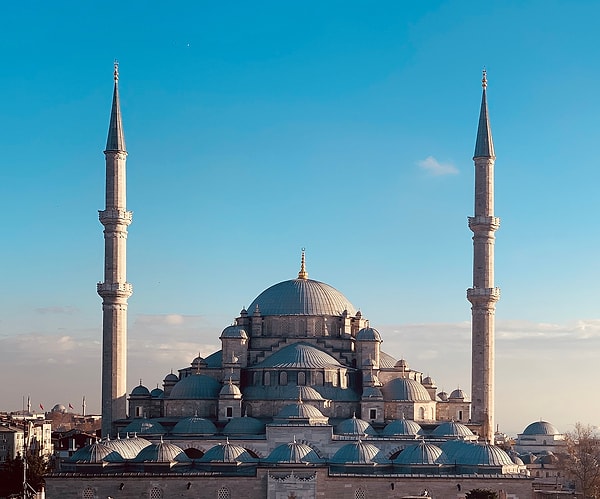
The Fatih Mosque is named after Mehmed II (Mehmed the Conqueror), the seventh sultan of the Ottoman Empire and the conqueror of Istanbul. The mosque was built between 1463-1470. It was built on the ruins of the Byzantine Church of the Holy Apostles, which had previously stood on the same site. This indicates that the Fatih Mosque was a point of transition and transformation, both physically and symbolically.
The main reason for this mosque is that Mehmed the Conqueror wanted to build a large complex in the centre of the city in line with his vision to turn Istanbul into an Islamic capital after the conquest. This complex is not only a religious building; it was designed as a multifaceted living centre including social, cultural and academic areas.
The original architect of the mosque is known as Atik Sinan (Eski Sinan), who left his mark on early Ottoman architecture. However, the mosque has been shaken by various earthquakes throughout history. In particular, the 1766 Istanbul earthquake almost completely destroyed the mosque, which was then rebuilt under the supervision of architect Mehmet Tahir Aga during the reign of Mustafa III. The building we see today is this reconstructed version.
Architectural Features of Fatih Mosque
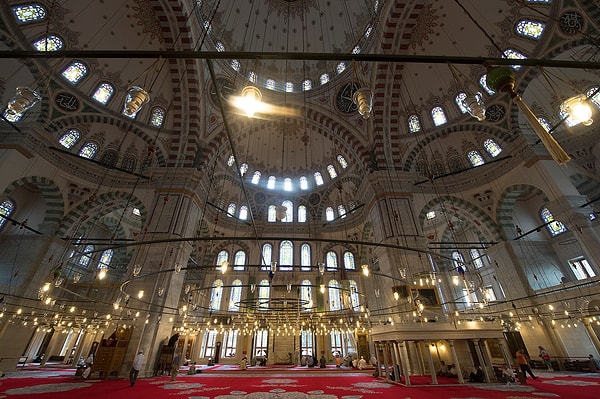
The architecture of the Fatih Mosque represents a transitional period in which classical Ottoman mosque architecture began to take shape. The first building had a large central dome and half domes supporting it. Although restorations following earthquakes have led to some deviations from the original architecture, the mosque still retains its monumental character.
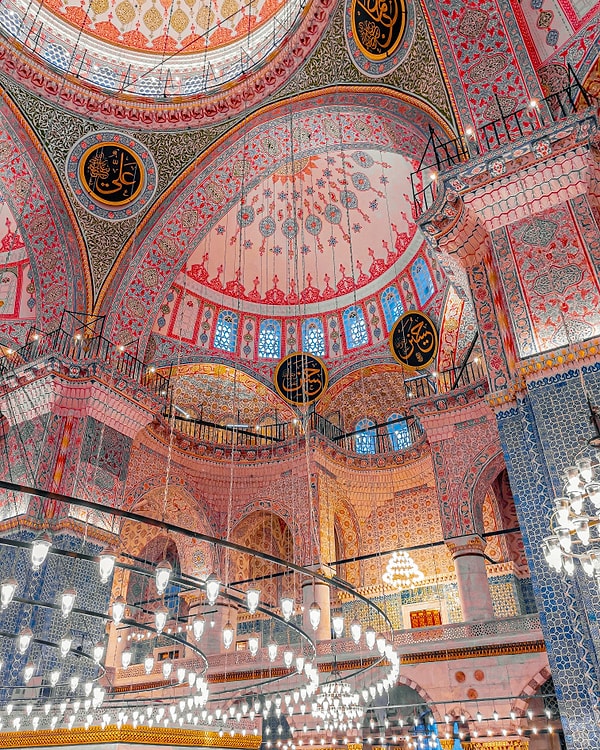
Dome and Support System
The central dome of the mosque is approximately 26 metres in diameter. This dome rests on four large pillars. Supported by half-domes, this main dome creates a spacious and airy interior. Although the structure generally reflects Baroque influences, it also reflects the simplicity of early Ottoman mosques.
Minarets
Fatih Mosque has two minarets. These minarets have two balconies and are both visually elegant and acoustically functional. The minarets, which rise symmetrically at the entrance of the structure, make an impressive contribution to the silhouette of the mosque.
Interior Decoration
The interior features particularly striking tile work, calligraphy and penwork. The mihrab and minbar are elaborately decorated, and the light filtering through the windows creates a mystical atmosphere. The walls and dome are adorned with verses written by famous calligraphers of the period.
Fatih Complex: A Civilisation Project

Fatih Mosque is not only a place of worship but also a comprehensive complex project. The complex included the following:
8 madrasas (each with a capacity of 125 students)
Library
Darüşşifa (Hospital)
Imaret (soup kitchen)
Dervish lodge
Tabhane
Caravanserai
Hamam
Market and shops
These structures demonstrate both the social welfare state approach and the advanced urban planning of the Ottoman Empire. The madrasas, in particular, housed the leading scientists of the period; figures such as Ali Kuşçu taught here. This shows that Fatih Mosque was not only an important religious centre but also a centre of science.
Who is Buried in Fatih Mosque?
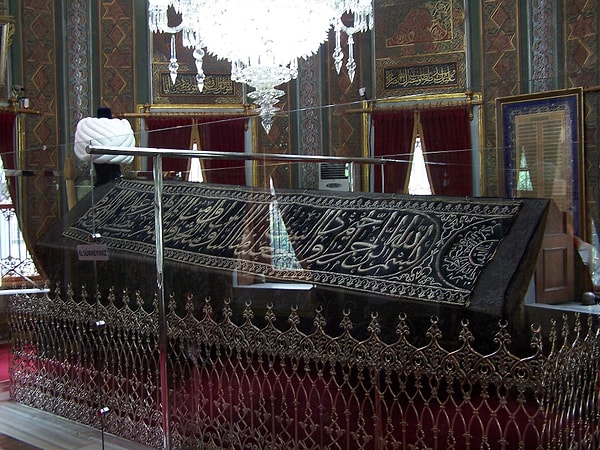
One of the most striking parts of the Fatih Mosque Complex is, of course, the tomb of Fatih Sultan Mehmed. Located in the eastern part of the mosque courtyard, the tomb has a simple but impressive architecture. In addition to Fatih, the tomb of his wife Gülbahar Hatun is also located here.
The tombs of important figures in Ottoman history, such as Gazi Osman Pasha, are also located within the complex. These tombs are important elements that allow visitors to the mosque to establish a spiritual connection.
Fatih Mosque Visitor Information: Admission Fee, Hours, and Transportation
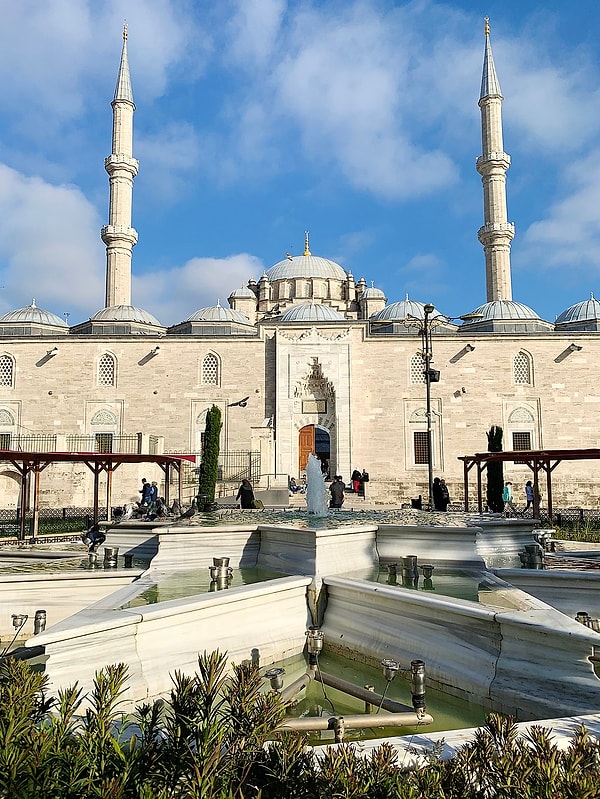
Admission Fee
Admission to Fatih Mosque is free. However, visitors are welcome to make donations. The tombs can also be visited free of charge.
Visiting Hours
The mosque is generally open to visitors from 9:00 a.m. to 6:00 p.m. However, during prayer times, especially before Friday and evening prayers, visitor entry may be closed. Therefore, paying attention to prayer times will improve your visit experience.
Dress Code
Modest clothing is recommended for visitors. Women are advised to cover their heads and keep their shoulders, arms and legs covered. Headscarves and skirts are usually available at the entrance.
Transportation
Fatih Mosque is located in the historic peninsula of Istanbul, making it quite central. Transportation by public transport is quite easy. It is possible to reach the mosque on foot or by a short bus/tram ride from the Aksaray, Eminönü, Vezneciler and Fatih districts.
The Current Role and Renewed Face of Fatih Mosque
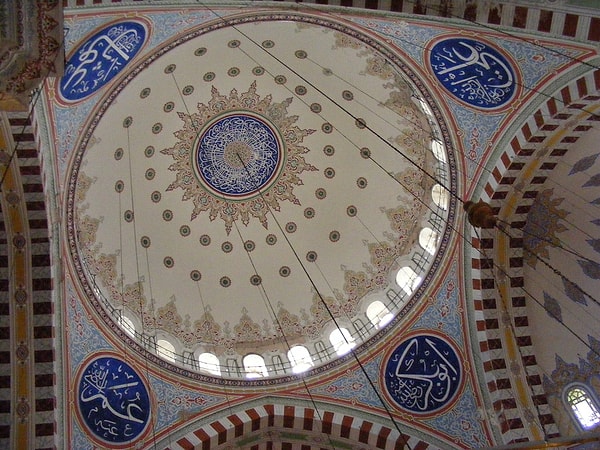
The mosque underwent a comprehensive restoration process between 2007 and 2012. Thanks to this restoration, both the structure's load-bearing system was strengthened and its aesthetic elements were repaired in resemblance with the original. Later, in 2021, it was brought up to date with minor restoration work to meet current needs.
Today, Fatih Mosque is not only an important destination for local and foreign tourists but also for the people of Istanbul. The mosque receives a large number of visitors, especially during Ramadan and religious holidays.
Why Visit Fatih Mosque?
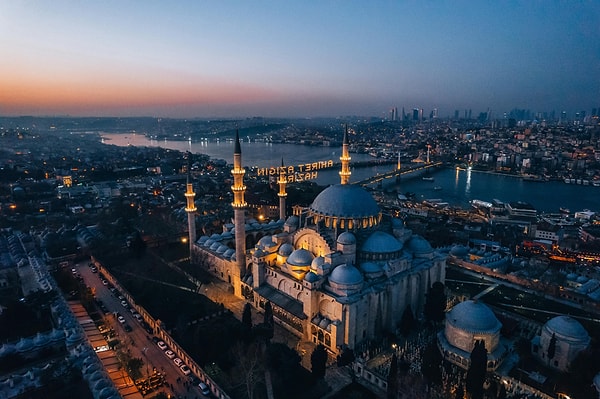
Fatih Mosque is one of the most important milestones not only in Ottoman but also in the world history of architecture and urbanism. It is an indispensable stop for anyone who wants to experience the vision of Sultan Mehmed the Conqueror, the development of Ottoman architecture, the integrated structure of social institutions and the spirit of Istanbul at a single point. For those seeking a visit with both historical and spiritual depth, the Fatih Mosque is a powerful symbol beating in the heart of Istanbul.
Keşfet ile ziyaret ettiğin tüm kategorileri tek akışta gör!

Send Comment